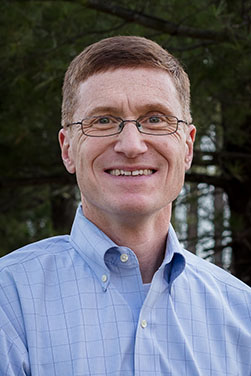

In the context of application to electronic materials, we recently discovered that very thin (2-10 monolayers) of TiO 2 could be prepared on H‑terminated Si by a process involving vapor phase deposition of a volatile Ti alkoxide followed by gentle heating.

This oxide may be useful for its inherent properties or it could serve as an adhesion layer to bond a SAMP to the substrate. Most approaches to surface activation of non-oxide substrates involve harsh reagents, such as oxygen plasma, for partial surface oxidation in contrast, we use “soft,” surface organometallic chemistry as a non-destructive method for interface synthesis: Ligating functional groups of the substrate serve as coordination sites for vapor-deposited titanium or zirconium alkoxide, which can then be converted under mild conditions to a surface-bound metal oxide. These broad classes of materials are important for emerging applications in electronics and bioscaffolds. SAMPs, however, do not bond directly to these materials, and so we had to develop interfaces to enable multi-component constructs.

More recently, we have shifted our attention from oxides to other inorganics or organic polymer substrates.

We introduced self-assembled monolayers of phosphonates (SAMPs) as a class of structurally variable, well-organized, dense coatings for metal oxides, and we showed them to be superior to well-known thiols/Au or siloxanes/oxides for cases where air and/or moisture are present. SAMPs are now in wide use, especially for electrode surface modification. Indeed, understanding and controlling interfaces lies at the confluence of nanoscience and microelectronics or medicine. Our approach is to focus on the basic chemistry that is key to interface design: Knowledge of nanoscopic structure and molecular bonding at the interface is essential. We are particularly interested in interfaces between dissimilar materials such as are present in molecular electronic devices or that exist between synthetics and living tissue in biomedical implants. He lives in Frisco with his wife and daughter.Our research aims to develop new surface and interface chemistry that can be integrated with novel architectures to create prototypical devices with outstanding behavior.
#DR SCHWARTZ PROFESSIONAL#
Schwartz is the team physician for the Allen Americans professional hockey team, Lebanon Trail High School in Frisco and a consultant for the Dallas Sidekicks professional indoor soccer team. In 2011, he received his Master in Business Administration from Texas Tech University. Schwartz also completed a fellowship in arthroscopy and sports medicine at Associated Orthopedics and Sports Medicine in 1998. He served as chief resident in his final year. Vincent’s Hospital in New York and performed his orthopedic surgery residency at New York Medical College and The State University of New York at Stony Brook. He completed a general surgery internship at St. Schwartz graduated from the Sophie Davis School of Biomedical Education of The City University of New York and received his medical degree from The State University of New York at Buffalo School of Medicine. Schwartz has served as the chief of the Department of Orthopedics at The Medical Center of Plano, as well as a clinical preceptor of the University of Texas Southwestern Medical Center’s Physician Assistant Program, the University of Oklahoma Health Science Center Physician Assistant Division and UTM at Galveston Physician Assistant Program.ĭr. He is the president of OrthoTexas’ executive board.ĭr. Schwartz is a board-certified and fellowship-trained orthopedic surgeon who specializes in arthroscopic and reconstructive surgery of the knee and shoulder.


 0 kommentar(er)
0 kommentar(er)
